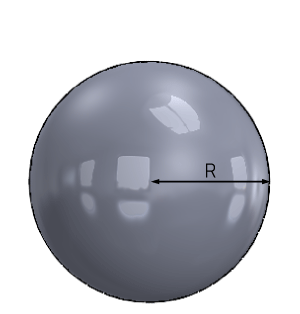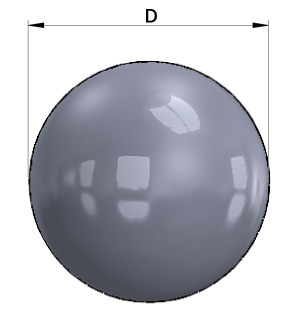Ball Volume & Weight Calculation
Calculate sphere volume and weight with radius or diameter input, supporting multiple units and materials.


Volume
-
Weight
-
Calculate the volume of a sphere using radius
\[Sphere\, volume = {4 \over 3} \times \pi \times radius^3 = {4 \over 3} \, \pi \, R^3 \]
Calculate the volume of a sphere using diameter
\[Sphere\, volume = {4 \over 3} \times \pi \times ({diameter \over 2})^3 = {1 \over 6} \, \pi \times diameter^3 = {1 \over 6} \, \pi \, D^3 \]
FAQ
- What is the difference between a sphere and a ball?
Mathematically, a sphere is the surface (hollow), while a ball is the solid interior including the surface. In practical calculations, both terms are often used interchangeably to refer to the solid 3D shape, and this calculator computes the volume of the solid ball. - How do I measure the radius or diameter of a sphere accurately?
Use calipers or a ruler to measure the diameter across the center of the sphere. The radius is half the diameter. For irregular or soft spheres, take multiple measurements and use the average. Ensure the measurement passes through the center for accuracy. - Why does the sphere volume formula use the power of 3?
Volume is a three-dimensional measurement, so all volume formulas involve cubic relationships. The sphere volume formula (4/3)πr³ comes from calculus integration of circular cross-sections, where the radius appears cubed due to the three-dimensional nature of the calculation. - What are common applications for sphere volume calculations?
Applications include calculating material quantities for spherical objects (balls, bearings, particles), determining capacity of spherical tanks, estimating volumes in powder metallurgy, calculating bubble or droplet volumes, and material weight estimation for manufacturing. - How do I calculate the volume of a partial sphere or hemisphere?
For a hemisphere (half sphere), multiply the full sphere volume by 0.5. For other partial spheres, you'll need more complex formulas involving spherical caps or segments. This calculator is designed for complete spheres only. - What materials are available in the weight calculation dropdown?
The calculator includes common materials like sintered iron, bronze bushings, stainless steel, brass, and engineering plastics. You can also select "Custom" to enter your own material density. The density values are typical for these materials but may vary based on specific grades and manufacturing processes.